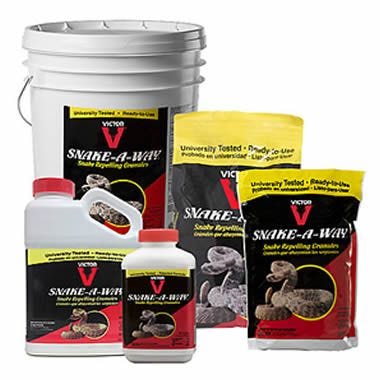





Snakes
How to Repel Snakes
Whether you want to repel snakes that are currently living on your property or keep them from entering in the first place, maintaining your yard and following a careful repelling plan are key. On this page, Havahart® teaches you how to repel snakes as well as effective habitat modification tips, so you can protect your home, business, campsite and more.
1 Know Your Local Snake Species

In order to successfully repel snakes, it's important to know what types of snakes you will be repelling. There are thousands of species of snakes, which all may vary in their skills, habits and reactions to particular chemicals or environmental changes. Some questions to ask include:
- What are the common local snake species?
- Are they poisonous or non-poisonous (venomous or non-venomous)?
- How do you identify each species?
- What do the local snakes like to eat?
2 Locate Any Present Snakes

Determine whether there are any snakes currently present on your property and whether they are indoors or outdoors. You can identify the presence of snakes by looking for signs such as:
- visual identification (seeing a snake)
- finding molted snake skin
- identifying s-shaped tracks in dust or sand
- hearing a rattling sound
*Traditional snake repellents are not recommended for snakes that are located indoors. Instead, you may need to hire a professional to remove the snakes. To learn more, read How to Get Rid of Snakes »
3 Obtain an Effective Snake Repellent

With several snake repellents on the market, it's important to know how to choose a snake repellent so you can protect your home in the best way possible. Below are variables to consider when choosing a snake repellent:
- Snake species: First and foremost, check the repellent's label to determine if your species is listed.
- Active ingredients: Ingredients like naphthalene and sulfur have a proven track record of repelling snakes.
- EPA registration: The Environmental Protection Agency registers products that will not have unreasonable adverse effects on people or pets when used as directed.
- Coverage area: This will determine how much snake repellent you'll need for the square footage of the area you want to protect.
4 Apply as Directed

The effectiveness, potency and safety of any snake repellent all rely on its proper application. It's important to carefully follow the instructions for use. Critical steps to keep in mind include:
- Wear gloves when applying snake repellents to avoid contact with your skin.
- Snake repellent granules should be applied in bands, and the width of the bands will vary based upon the species of the snakes you want to repel.
- Apply around the perimeter of the area you want to protect, at the rate instructed in the directions.
- To preserve maximum repellency at all times, it's important to reapply your snake repellent as often as directed.
5 Remove Attractants

One of the most effective ways to deter snakes from living on your property is by removing the elements they need for survival, like food and cover. Steps you can take to maintain a snake-free yard include:
- cleaning up bird seed, berries, pet food and trash that attract small animals to your property
- pulling weeds and trimming grass regularly to reduce cover for snakes as well as their prey
- removing piles of wood, rocks, mulch and debris under which snakes may seek concealment
- eliminating tall and low-lying vegetation snakes could use as denning sites
- filling in any abandoned animal burrows
TIP: Mice and rats are a primary food source for many snakes. To learn more about mouse control and rat control, visit the How To section of this site.
Expert Tips
- Snake repellents that work by disrupting the Jacobsen's Organ tend to be the most effective. This part of a snake's brain is essential for interpreting external signals that help a snake to safely navigate its environment. When that communication is temporarily broken, a snake will retreat in search of fresh air.
- Snakes bite when they feel threatened or startled. When removing potential denning sites in your yard, know that there could be a snake currently living there. Be sure to wear the proper protective gear, and tread lightly to avoid startling any present snakes.
- For more general animal repelling tips, read How to Repel »
